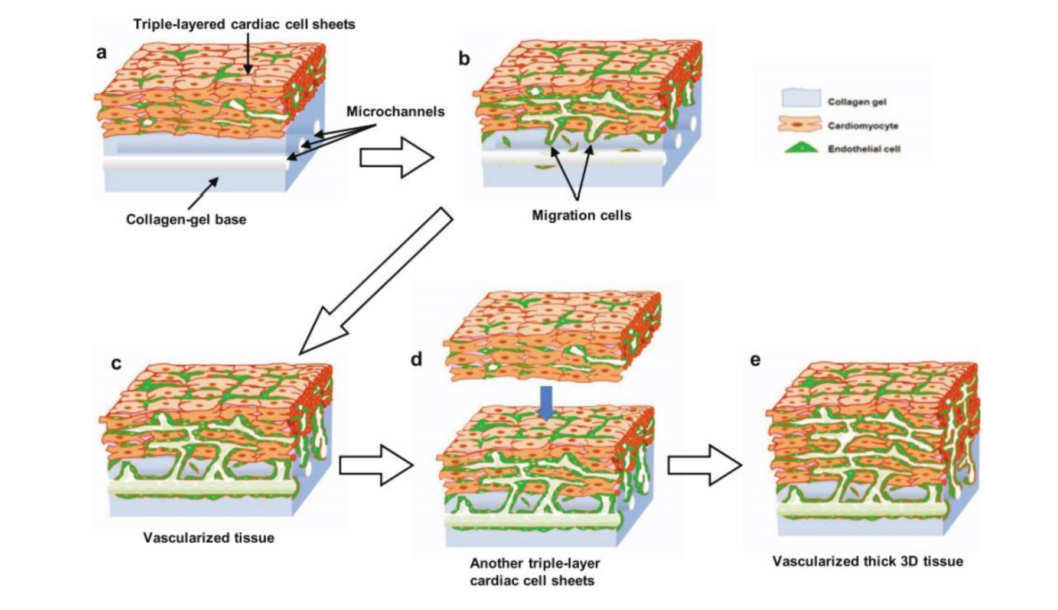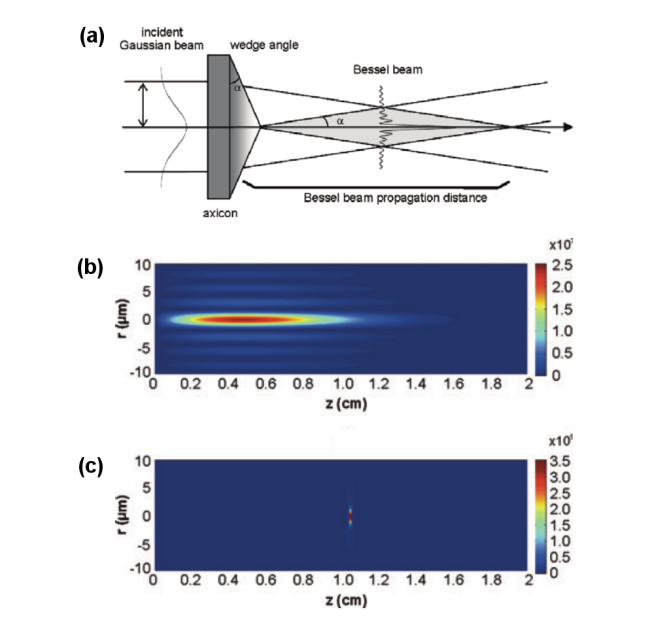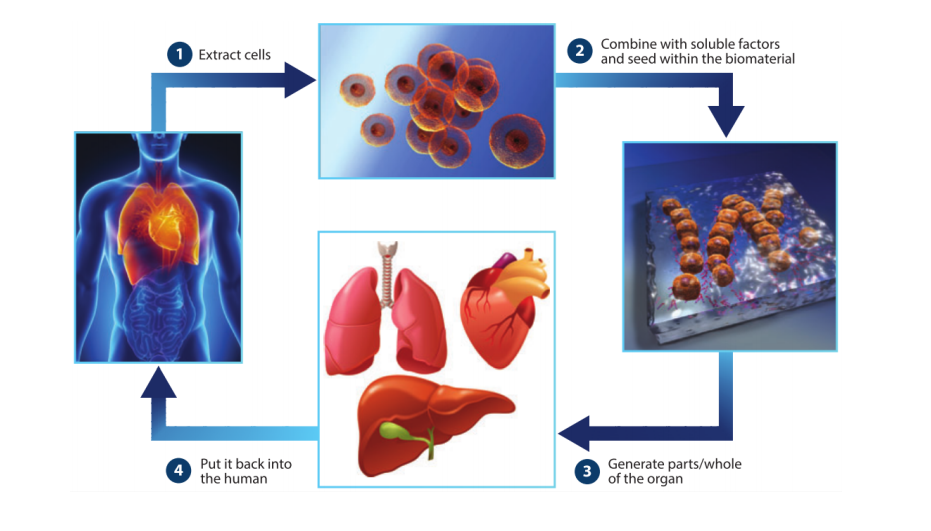Andy Wen Loong Liew has submitted a thesis, ‘Laser-based 3D printing using bessel beams for tissue engineering applications’ to Nanyang Technological University. Exploring a new technique for bioprinting, Liew studies the use of Bessel beams in connection with regenerative medicine techniques, and he also compares the benefits of traditional techniques.
Liew cites the benefits of Bessel beams (BB) in connection with 3D printing and customizing hydrogels, considering the following:
- Easy customization of construct architecture
- Reduced fabrication time
- High print resolution
- Ability to fabricate high aspect ratio tubular structures with anatomic relevance (and no supports)
This study also involves the use of collagen gel for improved success in sustaining cells and inducing endothelial sprouting.
Liew reminds us that the ultimate goal in tissue engineering is to begin 3D printing organs that are viable for transplant into humans; on the way, however, engineers have used a wide range of materials with customized hardware and software to begin engineering skin, cartilage, bone, and far more.
Liew asserts that so far there have been no studies of BB printing techniques published. Advantages and challenges are discussed regarding the new technique. Much of the work presented in the chapter 2 literary review is based on the following publication: Liew, Andy Wen Loong, and Yilei Zhang. ‘In vitro pre-vascularization strategies for tissue-engineered constructs – Bioprinting and others.’ International Journal of Bioprinting (2017) 3 3-17. There, Liew describes vascularization, the use of in vitro models, and current in vitro vascularization approaches like bioprinting, microfluidics (lithography), micropatterning, wire molding, and cell sheet engineering.“The aforementioned tissues which have successfully made the transition are avascular which makes them easier to engineer compared to vascular tissues such as heart and kidney tissue which are more complex,” states Liew.

Microfluidic technology used to engineer microvascular networks within 3D tissue scaffolds for applications in vascular tissue modeling. Scale bars: 100μm. (Adopted from ref.[91]).

Wire molding technique employed to fabricate perfusable 3D microvascular tubes within microporous cell-laden hydrogels to produce biomimetic tissue constructs. (Adopted from ref.[110]).

Cell sheet technology combined with a collagen based perfusion bioreactor for the preservation of cell viability by the vascularization of 3D tissues. (Adopted from ref.[122] URL: http://www.nature.com/articles/srep01316).
“This high intensity BB core is the result of constructive interference of the beam after exiting the axicon. Unlike focused Gaussian beams, the high intensity BB core extends throughout the length of the non-diffracting zone while retaining its highly localized profile,” states Liew. “Thus by exposing a pre-polymer solution to the BB core, a long fiber-like structure can be produced through a single exposure as the high intensity BB core propagates through the entire height of the solution.”

(a) Using an Axicon lens to produce a BB from an incident Gaussian Beam. (b) BB profile with extended depth of field, showcasing high intensity, non-diffracting core. (c) Focussed Gaussian Beam profile showing small voxel of high intensity, as compared to BB profile. (Adopted from ref.[130]).
The researchers 3D printed at room temperature, relying on a vat filled with pre-polymer solution, ‘placed on the translation stage,’ and centered on the BB propagation axis. Print settings were optimized as follows for all samples fabricated in the study: Laser power = 120µW, Magnification (M) = 1 (refer to Section 5.2.2), translational speed of stage = 1mm/s.

(a) Schematic diagram of optical set-up, laser propagation, and manipulation. Dotted red line indicates the BB. (b) Actual experimental set-up. Cyan arrows indicate the Gaussian beam while red arrows indicate the BB.

Mechanism for the fabrication of hydrogel constructs. Exposure of the pre-polymer solution to the BB results in localized crosslinking. Translational stage motion coupled with BB exposure results in the crosslinking of customizable hydrogel constructs
The researchers noted that 3D printing time of samples was ‘significantly reduced’ as they compared results with conventional methods; in fact, with BB, the average printing time was decreased to an impressive 20 seconds—reflecting a savings of more than 50 percent.
“Encapsulation of fluorescent beads (simulating cells) within the tube walls was also successfully demonstrated with this technique as a proof-of-concept for subsequent chapters where the printing technique will be used for direct cell encapsulation,” stated Liew.
“Finally, 3D hydrogel scaffolds with controlled microscale features and in-built microchannels were fabricated with both naturally-derived and synthetic polymers using the BB technique, showcasing its superior print resolution compared to conventional printing techniques and flexibility. Overall, the technique displayed strong potential to be applied in the field of TE in future.”
In using BBs for tissue engineering, the following properties should continue to be evaluated:
- Limitations in design complexity
- Multi-material, multi-cellular construct printing
- Variances in printing time for construct designs
- Long term effects on cell phenotype/genotype from UV exposure
- Flexibility of systems in ‘tuning’ resolution
- Structural non-conformity to original design
“ … there are several drawbacks to using the BB technique for bioprinting applications including wall thinning and limited design complexity,” concluded Liew. “Future work should include a balanced evaluation of how the proposed 111 BB printing technique compares to established, commercially available bioprinting systems in order to establish it as a viable alternative to current technology.”
3D printing has had an enormous impact on tissue engineering in recent years, as researchers create new materials and structures like scaffolds, improve hydrogel microenvironments, refine bioprinting for bone regeneration, and much more.
What do you think of this news? Let us know your thoughts! Join the discussion of this and other 3D printing topics at 3DPrintBoard.com.
[Source / Images: ‘Laser-based 3D printing using bessel beams for tissue engineering applications’]Subscribe to Our Email Newsletter
Stay up-to-date on all the latest news from the 3D printing industry and receive information and offers from third party vendors.
You May Also Like
US Army Corps of Engineers Taps Lincoln Electric & Eaton for Largest 3D Printed US Civil Works Part
The Soo Locks sit on the US-Canadian border, enabling maritime travel between Lake Superior and Lake Huron, from which ships can reach the rest of the Great Lakes. Crafts carrying...
Construction 3D Printing CEO Reflects on Being Female in Construction
Natalie Wadley, CEO of ChangeMaker3D, could hear the words of her daughter sitting next to her resounding in her head. “Mum, MUM, you’ve won!” Wadley had just won the prestigious...
Blue Laser-powered M600 3D Printer Launched by Meltio
Founded in 2019 as a joint venture between Additec and Sicnova, metal 3D printer OEM Meltio develops and manufactures high-performance and easy-to-use metal 3D printing solutions that use its patented wire-laser metal...
3D Printed Storage Tanks Cut Material Costs by 25%
In a previous article, “Concrete Dreams: Let’s Print Money, Not Houses,” we discussed how the spotlight on 3D printing homes might be misplaced. Bollards, pedestrian bridges, and concrete tanks could...






























